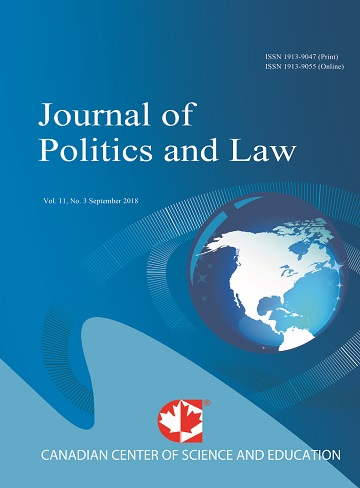Protection of Children from Recruitment and Use in Armed Conflict: Role of International Legal Framework
- Siwnan Rasakandan
- Pardis Moslemzadeh Tehrani
Abstract
One of the most worrying developments in recent times is the act of recruitment and use of children in armed conflicts. This article examines the law relating to this phenomenon. The relevant law is found in five different treaties: Additional Protocol I; Additional Protocol II; Convention on the Rights of Child (CRC), Optional Protocol to CRC (OPAC); and the Rome Statute. Analysis shows that Additional Protocols I and II, CRC and the Rome Statute protect children, fundamentally by prohibiting the recruitment and use of under 15 children in hostilities, meanwhile the OPAC has raised the recruitment age to 18 years for armed groups. Law also allows the recruitment of children between the ages of 15 to 18, if preference is given to the oldest. It can be reasoned that the under 15 age level allows for a balance between military necessity and humanity whereas the under 18 moves towards humanity. The under 15 age limit is also favorable to armed groups in wars for self-determination while the recruitment of under 18s is preferable from humanitarian perspective. Classifying recruitment as compulsory, voluntary, conscription and enlistment appears irrelevant in the face of new wars. Distinction between direct part and indirect part or active participation is also seen as irrelevant. Law is substantially well structured with potential to inhibit recruitment of children while providing for evolving interpretation. The lack of enforceability is the main concern that needs to be researched and energized.
- Full Text:
 PDF
PDF
- DOI:10.5539/jpl.v15n4p230
Journal Metrics
h-index (2017): 14
i10-index (2017): 39
h5-index (2017): 9
h5-median (2017): 11
Index
- Academic Journals Database
- ACNP
- ANVUR (Italian National Agency for the Evaluation of Universities and Research Institutes)
- Berkeley Library
- CNKI Scholar
- COPAC
- CrossRef
- DTU Library
- EBSCOhost
- Elektronische Zeitschriftenbibliothek (EZB)
- EuroPub Database
- Excellence in Research for Australia (ERA)
- Genamics JournalSeek
- GETIT@YALE (Yale University Library)
- Ghent University Library
- Google Scholar
- Harvard Library
- HeinOnline
- INDEX ISLAMICUS
- Infotrieve
- Jisc Library Hub Discover
- JournalGuide
- JournalTOCs
- LOCKSS
- MIAR
- Mir@bel
- NewJour
- Norwegian Centre for Research Data (NSD)
- Open J-Gate
- PKP Open Archives Harvester
- Publons
- Pubmed journal list
- RePEc
- ROAD
- Scilit
- SHERPA/RoMEO
- Standard Periodical Directory
- Stanford Libraries
- UCR Library
- Ulrich's
- UniCat
- Universe Digital Library
- UoS Library
- WorldCat
- Zeitschriften Daten Bank (ZDB)
Contact
- William TaiEditorial Assistant
- jpl@ccsenet.org
